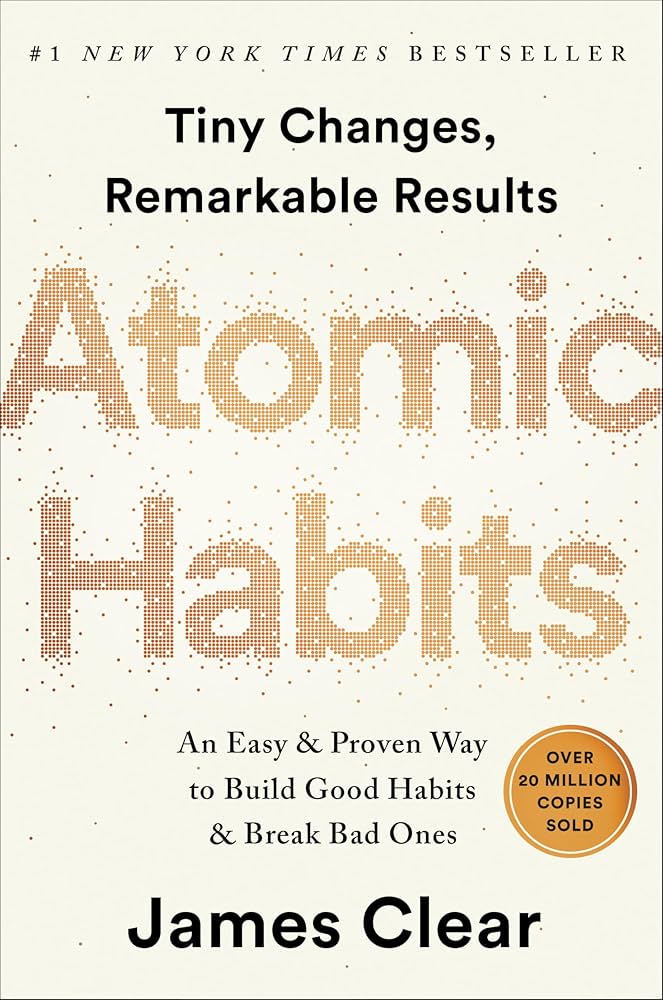Introduction
Do you ever feel like you’re stuck in a cycle of setting goals but never quite achieving them? Atomic Habits by James Clear is a game-changing book that dives deep into the science of habit formation and provides actionable strategies to help you build good habits, break bad ones, and ultimately transform your life. In this review, we’ll explore the key concepts, practical tools, and personal applications of Atomic Habits to help you understand why this book deserves a spot on your bookshelf.
Key Takeaways
1. The Power of Atomic Habits
James Clear introduces the concept of atomic habits—small, incremental changes that compound over time to produce remarkable results. Just as a plane adjusting its trajectory by a few degrees can end up in a completely different destination, tiny changes in your daily habits can significantly alter the course of your life.
Key Insight: “A slight change in your daily habits can guide your life to a very different destination.”
Application: Focus on making 1% improvements every day. Over time, these small changes will compound into massive results.
2. The Habit Loop
Habits are formed through a continuous feedback loop consisting of four stages: Cue, Craving, Response, and Reward. Understanding this loop is crucial for building good habits and breaking bad ones.
- Cue: The trigger that initiates the habit (e.g., your phone buzzing).
- Craving: The desire to act on the cue (e.g., wanting to know who messaged you).
- Response: The action you take (e.g., picking up your phone).
- Reward: The satisfaction you gain (e.g., solving the problem of who messaged you).
Application: Identify the cues and rewards associated with your habits. Use this knowledge to design better habits and disrupt harmful ones.
3. The Four Laws of Behavior Change
James Clear outlines four laws to help you build good habits and break bad ones:
Law 1: Make It Obvious
Key Insight: “Until you make the unconscious conscious, it will direct your life, and you will call it fate.”
Application: Use a Habit Scorecard to become aware of your current habits. Then, use implementation intentions (e.g., “I will [behavior] at [time] in [location]”) and habit stacking (e.g., “After [current habit], I will [new habit]”) to make your desired habits more obvious.
Law 2: Make It Attractive
Key Insight: “The more attractive an opportunity is, the more likely it is to become habit-forming.”
Application: Use temptation bundling to pair a habit you need to do with one you want to do (e.g., watching Netflix while working out). Surround yourself with people who embody the habits you want to adopt.
Law 3: Make It Easy
Key Insight: “The more energy required, the less likely it is to happen.”
Application: Reduce friction for good habits by making them as easy as possible (e.g., laying out your workout clothes the night before). Use the Two-Minute Rule to start small (e.g., “Read one page” instead of “Read an hour”).
Law 4: Make It Satisfying
Key Insight: “What is immediately rewarded is repeated. What is immediately punished is avoided.”
Application: Use habit trackers to visually measure your progress and create a sense of accomplishment. Add immediate rewards to good habits (e.g., treating yourself after a workout).
4. Identity-Based Habits
One of the most powerful ideas in Atomic Habits is the concept of identity-based habits. Instead of focusing solely on outcomes, focus on becoming the type of person who embodies those outcomes.
Key Insight: “The goal isn’t to run a marathon; it’s to become a runner.”
Application: Shift your mindset from “I want to achieve X” to “I want to become the type of person who does X.” For example, instead of saying, “I want to lose weight,” say, “I want to become a healthy person.”
5. The Valley of Disappointment
Progress is rarely linear. When you start a new habit, you may not see immediate results, leading to frustration and giving up. James Clear calls this the Valley of Disappointment.
Key Insight: “The most powerful outcomes of any compounding process are delayed.”
Application: Stay patient and trust the process. Focus on showing up consistently, even when results aren’t immediately visible.
Strengths of the Book
- Actionable Advice: Clear provides practical, step-by-step strategies for building and breaking habits.
- Science-Based: The book is grounded in psychology and neuroscience, making it both credible and insightful.
- Relatable Examples: Clear uses real-life stories and examples to illustrate his points, making the content engaging and relatable.
- Universal Appeal: The principles in Atomic Habits can be applied to any area of life, from fitness and productivity to relationships and personal growth.
Weaknesses of the Book
- Repetitiveness: Some readers may find the concepts repetitive, as Clear reiterates key ideas throughout the book.
- Overwhelming for Beginners: The sheer number of strategies and tools may feel overwhelming to those new to habit formation.
Wrap-Up
Atomic Habits is a must-read for anyone looking to improve their habits and transform their life. James Clear’s practical advice, combined with his science-based approach, makes this book a powerful tool for personal growth. Whether you’re trying to build good habits, break bad ones, or simply understand the science of behavior change, Atomic Habits has something for everyone.
A transformative guide to habit formation that delivers actionable insights and lasting results.
Who Should Read This Book?
- Individuals looking to build better habits and break bad ones.
- Anyone interested in personal development and self-improvement.
- People who enjoy science-based, practical advice.
- Fans of books like The Power of Habit by Charles Duhigg and Tiny Habits by BJ Fogg.
Have you read Atomic Habits? What did you think? Let me know in the comments below!
